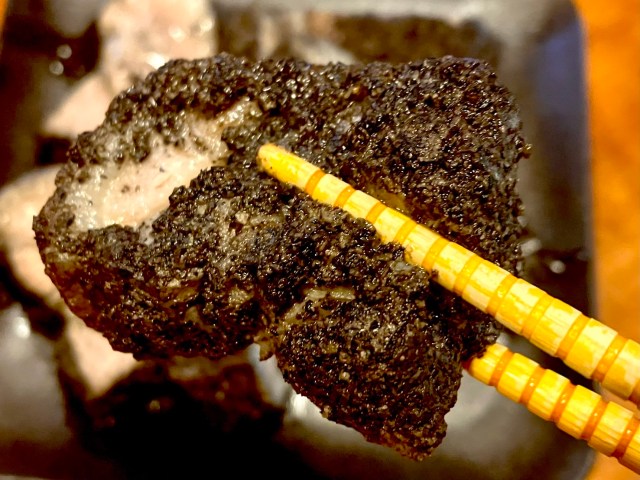
Its mysterious outer coating is not burned but simply incorporates one special ingredient.
As someone who lives on Japan’s main island of Honshu, our Japanese-language reporter and resident foodie Udonko is often intrigued by the regional and vastly different cuisines found throughout Japan. Nowhere is the local food scene more captivating for her than in Okinawa Prefecture to the south, with its blend of indigenous and foreign gastronomic influences. In fact, the latest Okinawan dish to cause her to do a double take is minudaru, or pork loin that’s been coated in a special black sauce and steamed. Udonko was startled the first time she saw a picture of this dish because its jet-black color led her to think that the meat was burned to a crisp, or perhaps coated in nori seaweed. But it was neither of those things, and she soon realized that making it at home didn’t seem all that difficult. She was so curious about how this dish with its unusual color would taste that she decided to make it for herself.
The first step was to prepare the sauce. Luckily, the recipe didn’t call for any niche Okinawan seasonings or foodstuffs, but only ingredients used in standard Japanese cooking. To be precise, she blended equal parts soy sauce and mirin (a sweet cooking rice wine) along with a smaller amount of sugar.
She then let the sliced pork loin marinate in the mixture for about 30 minutes.
The next step was to coat the loin in the special ingredient that gave it its distinctive color: roasted and ground black sesame seeds. She enjoyed seeing the dish take shape as the meat picked up the crushed seeds.
Finally, all she had to do was steam the whole thing (in her fancy French steamer, nonetheless).
When finished, she placed the pork on a plate to admire her work. Tada!
Once again, this is not scorched meat. It looked exactly the way it should.
Udonko prepped herself for her first bite of minudaru ever.
Perhaps it was because she only let the meat marinate for the bare minimum time, but the inside tasted like regular juicy pork. Thanks to the rich sesame seed outer coating, however, she didn’t feel like like anything was lacking, especially when both parts were in the same bite. It was also pleasantly filling.
She could see why this is known as a popular dish among children in Okinawa. It had a gentle flavor in contrast to its striking outer appearance.
In all all, the minudaru was a big success. Udonko could see herself making it a second, third, and several more times. It was simple, didn’t take long to prep, and could be easily made anywhere in the country.
While Udonko followed this recipe from Okinawan cooking site Okireshi, you can view this recipe for minudaru in English courtesy of Japan’s Ministry of Agriculture, Forestry, and Fisheries. The two recipes are extremely similar, but while the Japanese recipe had Udonko marinate the pork loin in the sauce mixture before adding the ground sesame seeds, the one in English has you add it to the sauce right from the start.
Udonko can’t wait to try authentic minudaru the next time she’s in Okinawa. In the meantime, she might have to stave off other Okinawan food cravings by stopping by Tokyo Station for one of these epic pork tamago (egg) onigiri.
All images © SoraNews24
● Want to hear about SoraNews24’s latest articles as soon as they’re published? Follow us on Facebook and Twitter!
[ Read in Japanese ]

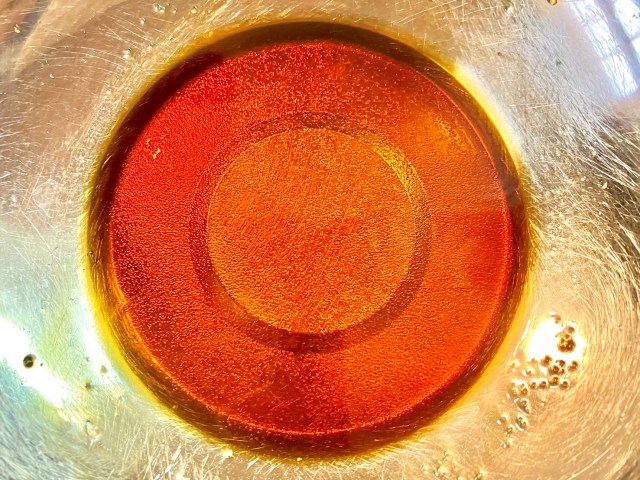


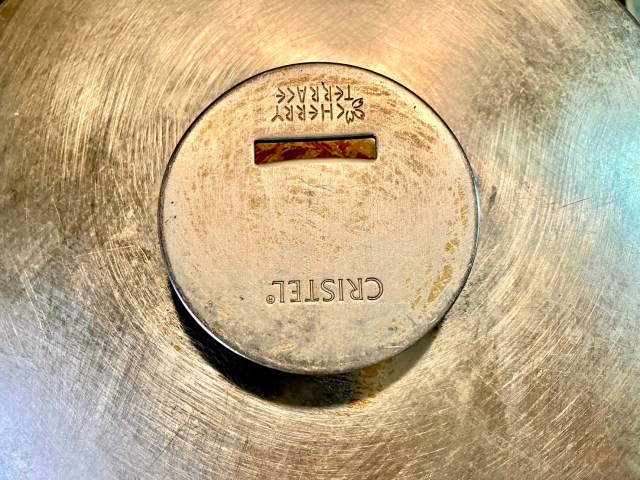
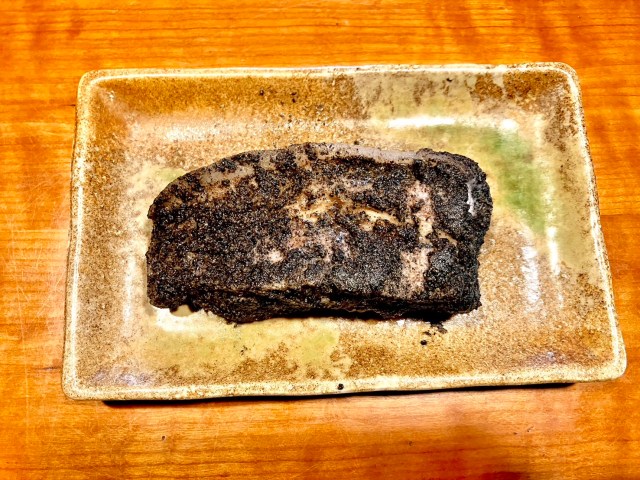
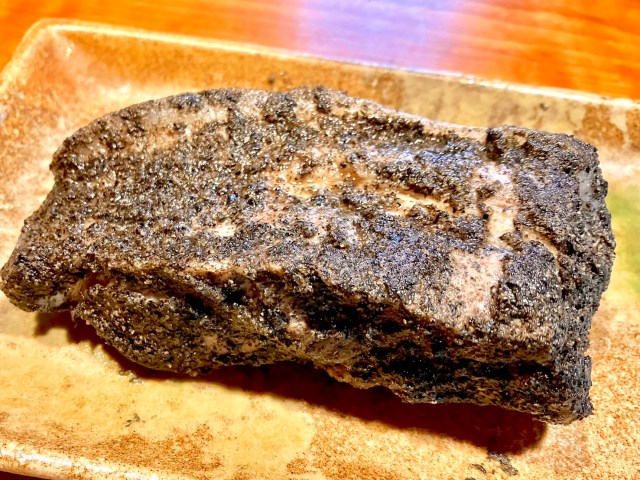
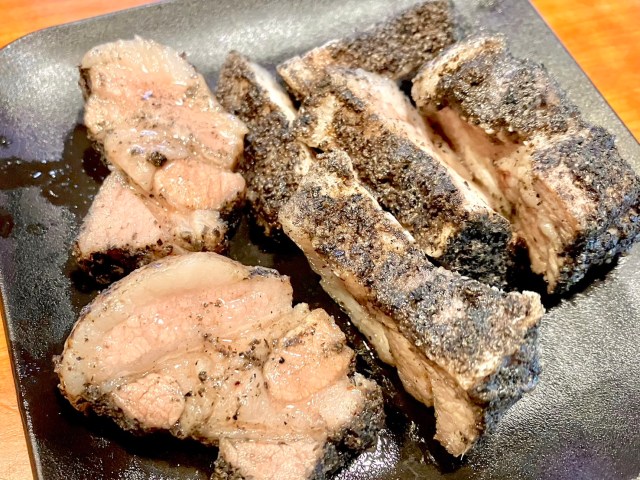
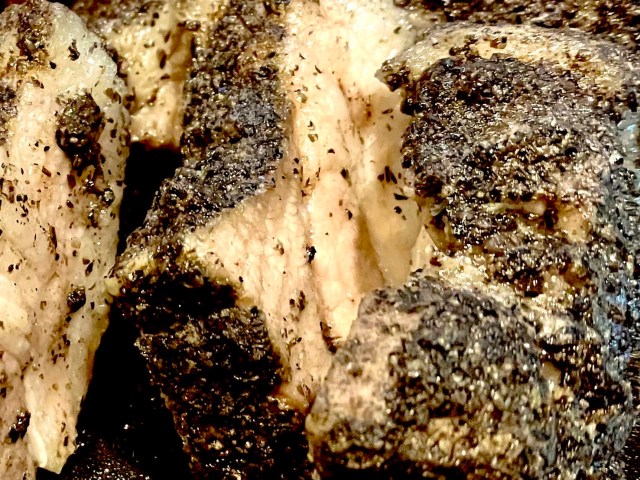
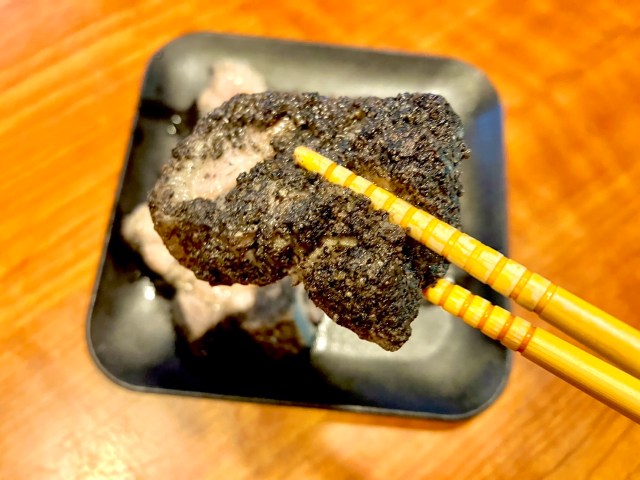
 We try making Nisshin’s Jijimi Korean Pancakes in a cup kit【SoraKitchen】
We try making Nisshin’s Jijimi Korean Pancakes in a cup kit【SoraKitchen】 We try making a low-calorie katsu with tofu instead of pork【SoraKitchen】
We try making a low-calorie katsu with tofu instead of pork【SoraKitchen】 We make an easy, cheap variation of an Eel Kabayaki Bowl that’s also vegetarian!【SoraKitchen】
We make an easy, cheap variation of an Eel Kabayaki Bowl that’s also vegetarian!【SoraKitchen】 Japanese mom cooking – A super easy recipe for daikon, Japan’s giant radishes【SoraKitchen】
Japanese mom cooking – A super easy recipe for daikon, Japan’s giant radishes【SoraKitchen】 How to make self-isolation tiramisu with simple ingredients【SoraKitchen】
How to make self-isolation tiramisu with simple ingredients【SoraKitchen】 Starbucks Japan ready to get Year of the Horse started with adorable drinkware and plushies【Pics】
Starbucks Japan ready to get Year of the Horse started with adorable drinkware and plushies【Pics】 7 great places to see Mt. Fuji from without having to climb it
7 great places to see Mt. Fuji from without having to climb it Beautiful sightseeing boat is a floating tea ceremony venue in east Japan’s best hot spring town
Beautiful sightseeing boat is a floating tea ceremony venue in east Japan’s best hot spring town Is this the most relaxing Starbucks in Japan?
Is this the most relaxing Starbucks in Japan? Is “The Most Annoying but Most Delicious” ramen from 7-Eleven truly the most delicious?
Is “The Most Annoying but Most Delicious” ramen from 7-Eleven truly the most delicious? Japan’s oldest largetooth sawfish in captivity back on display in Mie Prefecture
Japan’s oldest largetooth sawfish in captivity back on display in Mie Prefecture McDonald’s Japan unleashes final appeal of 2015 to disgruntled fan base: Fancy cakes!
McDonald’s Japan unleashes final appeal of 2015 to disgruntled fan base: Fancy cakes! New Japanese KitKat flavour lets you eat a zunda milkshake
New Japanese KitKat flavour lets you eat a zunda milkshake Sparkling sake in a can seeks to solve a problem that sometimes keeps sake off the dinner table
Sparkling sake in a can seeks to solve a problem that sometimes keeps sake off the dinner table Coca Cola releases new Mt Fuji bottles in Japan
Coca Cola releases new Mt Fuji bottles in Japan Disillusionment at Tsukiji’s tourist-target prices led us to a great ramen restaurant in Tokyo
Disillusionment at Tsukiji’s tourist-target prices led us to a great ramen restaurant in Tokyo Japan may add Japanese language proficiency, lifestyle classes to permanent foreign resident requirements
Japan may add Japanese language proficiency, lifestyle classes to permanent foreign resident requirements Lacquerware supplier to emperor of Japan and Pokémon team up for new tableware
Lacquerware supplier to emperor of Japan and Pokémon team up for new tableware Starbucks Japan releases new zodiac chilled cup drink for 2026
Starbucks Japan releases new zodiac chilled cup drink for 2026 7-Eleven Japan’s ramen-cooking robot whipped us up a bowl of noodles【Taste test】
7-Eleven Japan’s ramen-cooking robot whipped us up a bowl of noodles【Taste test】 Cyberpunk anime meets traditional culture in Ghost in the Shell gold leaf Japanese changing screens
Cyberpunk anime meets traditional culture in Ghost in the Shell gold leaf Japanese changing screens Hello Kitty Choco Egg figures are an adorable trip through three periods of Japanese pop culture【Pics】
Hello Kitty Choco Egg figures are an adorable trip through three periods of Japanese pop culture【Pics】 Japan’s otoshidama tradition of giving kids money at New Year’s gets a social welfare upgrade
Japan’s otoshidama tradition of giving kids money at New Year’s gets a social welfare upgrade Japan’s human washing machines will go on sale to general public, demos to be held in Tokyo
Japan’s human washing machines will go on sale to general public, demos to be held in Tokyo 7-Eleven Japan starts new temporary luggage storage service in over 300 branches
7-Eleven Japan starts new temporary luggage storage service in over 300 branches Starbucks teams up with 166-year-old Kyoto doll maker for Year of the Horse decorations【Photos】
Starbucks teams up with 166-year-old Kyoto doll maker for Year of the Horse decorations【Photos】 Tokyo considering law requiring more trash cans following litter increase in heavily touristed area
Tokyo considering law requiring more trash cans following litter increase in heavily touristed area Tokyo’s Tsukiji sushi neighborhood asks tour groups to stay away for the rest of the month
Tokyo’s Tsukiji sushi neighborhood asks tour groups to stay away for the rest of the month Nintendo’s Kirby now delivering orders at Kura Sushi restaurants, but not in Japan
Nintendo’s Kirby now delivering orders at Kura Sushi restaurants, but not in Japan Tokyo event lets you travel back in time, for free, to celebrate 100 years since Showa era start
Tokyo event lets you travel back in time, for free, to celebrate 100 years since Showa era start Sanrio theme park in Japan announces plans to expand into a Sanrio resort
Sanrio theme park in Japan announces plans to expand into a Sanrio resort Stamina-destroying “Paralysis Noodles” are Tokyo’s newest over-the-top ramen innovation
Stamina-destroying “Paralysis Noodles” are Tokyo’s newest over-the-top ramen innovation Survey asks foreign tourists what bothered them in Japan, more than half gave same answer
Survey asks foreign tourists what bothered them in Japan, more than half gave same answer Japan’s deadliest food claims more victims, but why do people keep eating it for New Year’s?
Japan’s deadliest food claims more victims, but why do people keep eating it for New Year’s? We deeply regret going into this tunnel on our walk in the mountains of Japan
We deeply regret going into this tunnel on our walk in the mountains of Japan Studio Ghibli releases Kodama forest spirits from Princess Mononoke to light up your home
Studio Ghibli releases Kodama forest spirits from Princess Mononoke to light up your home Major Japanese hotel chain says reservations via overseas booking sites may not be valid
Major Japanese hotel chain says reservations via overseas booking sites may not be valid Put sesame oil in your coffee? Japanese maker says it’s the best way to start your day【Taste test】
Put sesame oil in your coffee? Japanese maker says it’s the best way to start your day【Taste test】 No more using real katana for tourism activities, Japan’s National Police Agency says
No more using real katana for tourism activities, Japan’s National Police Agency says The top 10 annoying foreign tourist behaviors on trains, as chosen by Japanese people【Survey】
The top 10 annoying foreign tourist behaviors on trains, as chosen by Japanese people【Survey】 Starbucks Japan reveals new sakura drinkware collection, inspired by evening cherry blossoms
Starbucks Japan reveals new sakura drinkware collection, inspired by evening cherry blossoms Leftover sushi? A popular manga suggests making it into fried rice【SoraKitchen】
Leftover sushi? A popular manga suggests making it into fried rice【SoraKitchen】 How to make a spicy chicken katsudon in just three minutes【SoraKitchen】
How to make a spicy chicken katsudon in just three minutes【SoraKitchen】 Nametake tuna rice: A delicious rice cooker recipe using just three ingredients【SoraKitchen】
Nametake tuna rice: A delicious rice cooker recipe using just three ingredients【SoraKitchen】 It turns out making this traditional Niigata dessert is easy, so we tried it!【SoraKitchen】
It turns out making this traditional Niigata dessert is easy, so we tried it!【SoraKitchen】 Japanese restaurant chain shows us how to make katsudon in three minutes【SoraKitchen】
Japanese restaurant chain shows us how to make katsudon in three minutes【SoraKitchen】 We try making red-bean rice using an ice cream bar【SoraKitchen】
We try making red-bean rice using an ice cream bar【SoraKitchen】 Japan goes crazy for “gaming eggs,” and here’s the super-easy recipe【SoraKitchen】
Japan goes crazy for “gaming eggs,” and here’s the super-easy recipe【SoraKitchen】 How to turn McDonald’s chicken nuggets into tasty katsudon in five minutes【SoraKitchen】
How to turn McDonald’s chicken nuggets into tasty katsudon in five minutes【SoraKitchen】 Making spicy instant ramen fried rice, Korea’s latest viral food trend【SoraKitchen】
Making spicy instant ramen fried rice, Korea’s latest viral food trend【SoraKitchen】 Lawson convenience store teaches us how to make okonomiyaki with no knife or bowl 【SoraKitchen】
Lawson convenience store teaches us how to make okonomiyaki with no knife or bowl 【SoraKitchen】 Rice cooker kuri gohan and two more super-easy chestnut recipes to make this fall【SoraKitchen】
Rice cooker kuri gohan and two more super-easy chestnut recipes to make this fall【SoraKitchen】 How to make a delicious tempura nothing bowl without any actual cooking【SoraKitchen】
How to make a delicious tempura nothing bowl without any actual cooking【SoraKitchen】 How to make an imitation katsudon pork cutlet bowl using imitation katsu【SoraKitchen】
How to make an imitation katsudon pork cutlet bowl using imitation katsu【SoraKitchen】 This rare autumn vegetable is the perfect addition to your stir-fry or salad【SoraKitchen】
This rare autumn vegetable is the perfect addition to your stir-fry or salad【SoraKitchen】 Osaka gyoza chain teaches simple way to take your gyoza to the next level【SoraKitchen】
Osaka gyoza chain teaches simple way to take your gyoza to the next level【SoraKitchen】 How to make a Big Mac in Tokyo at a fraction of the price with minimal effort【SoraKitchen】
How to make a Big Mac in Tokyo at a fraction of the price with minimal effort【SoraKitchen】
Leave a Reply